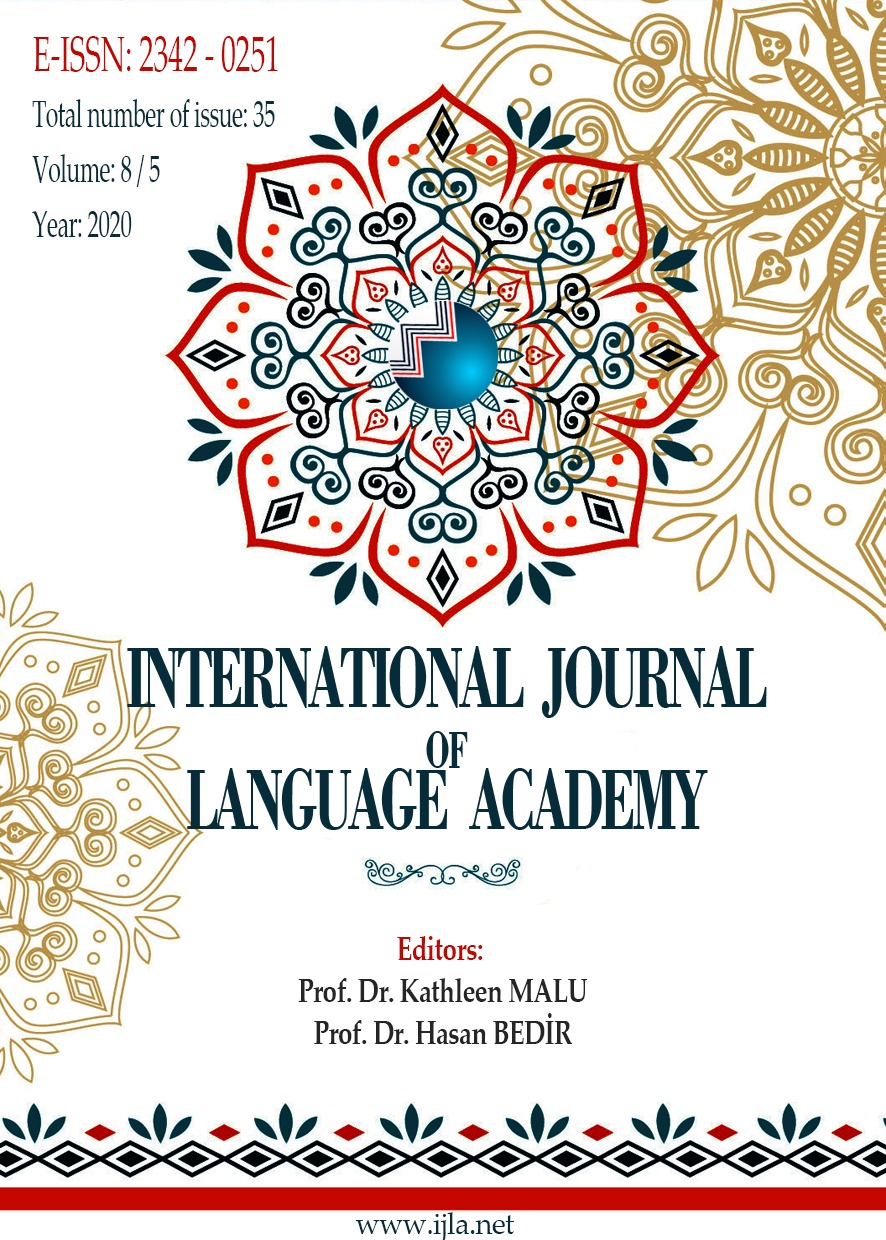A JOURNEY OF FEMINIST REBELLION THROUGH CHARLOTTE PERKINS GILMAN’S SHORT STORY THE YELLOW WALLPAPER AND HER NOVEL HERLAND
Author :
Abstract
This study handles American woman writer Charlotte Perkins Gilman’s works called The Yellow Wallpaper and Herland as the products of Gilman’s feminist rebellion or as parts of her feminist journey contributing to it. In the study, the aim is to reveal that each of these two works constitutes a different part of Gilman’s maturation journey as a feminist writer, basically feminist theory, and besides, text-based and comparison methods are adopted accordingly. While the writer’s story called The Yellow Wallpaper and dated 1892, is thought to be the product of the writer’s first years as a feminist or a basis for her feminist journey; her utopian novel Herland is considered to be the masterpiece or in other words, the peak of her feminist journey. It is no doubt that both of the writer's works are unique and significant in themselves separately. However, what is proposed here is that each constitutes a different part of Gilman's career as a feminist writer. Thus, the story called The Yellow Wallpaper - although the protagonist’s struggle for freedom, who can also be called as the female narrator remains unresolved- constructs the basis of Gilman’s feminist rebellion. Whereas Herland, displaying the characteristics of a feminist work not only with the matriarchal society handled in the novel but also in terms of the phenomena such as maternity, fertility, and labor sharing featured in the novel, carries Gilman’s feminist struggle or rebellion to its peak. Hence, through her two works, the writer's maturation journey as a feminist in time is discussed
Keywords
Abstract
This study handles American woman writer Charlotte Perkins Gilman’s works called “The Yellow Wallpaper” and Herland as the products of Gilman’s feminist rebellion or a part of her feminist journey contributing to it. While the writer’s story called “The Yellow Wallpaper” and dated 1892, is thought to be the product of the writer’s first years as a feminist or a basis for her feminist journey; her utopian novel Herland is considered to be the masterpiece or in other words, the peak of her feminist journey. It is no doubt that both of the writer's works are unique and significant in themselves separately. However, what is proposed here is that each constitutes a different part of Gilman's career as a feminist writer. Thus, the story called “The Yellow Wallpaper” - although the protagonist’s struggle for freedom, who can also be called as the female narrator remains unresolved- constructs the basis of Gilman’s feminist rebellion. Whereas Herland, displaying the characteristics of a feminist work not only with the matriarchal society handled in the novel but also in terms of the phenomena such as maternity, fertility, and labor sharing featured in the novel, carries Gilman’s feminist struggle or rebellion to its peak. Hence, through her two works, the writer's maturation journey as a feminist in time is discussed.
Keywords
- Berenji, F. Q. (2013). Time and gender in Charlotte Perkins Gilman’s The Yellow Wallpaper and Kate Chopin’s The story of an hour. Journal of History Culture and Art Research (Karabuk University), 2(2), 221-234.
- Bressler, C. E. (2007). Literary criticism, An introduction to theory and practice. New Jersey: Pearson Prentice Hall.
- Firestone, S. (1972). The dialectic of sex. New York: Bantam Books.
- Foucault, M. (1975). Discipline and punish. New York: Vintage Books.
- Gilbert, S. M. & Gubar, S. (2000). The madwoman in the attic- the woman writer and the nineteenth-century literary imagination. (Second Edition) New Haven and London: Yale University Press.
- Gilman, C. P. (1979). Herland. New York: Pantheon Books.
- Gilman, C. P. (1989). The yellow wallpaper and other writings. New York: Bantam Books.
- Hamdan, S. I. & Vengadasamy, R. 2006). Herland and Charlotte Perkins Gilman’s utopian social vision of women and society. JILID 1, BILANGAN 1, 1-8.
- Lanser, S. S. (1989). Feminist criticism, the yellow wallpaper, and the politics of color in america. Feminist Studies, 15(3), Feminist Reinterpretations/Reinterpretations of Feminism, 415-441.
- Lloyd, B. (1998). Feminism, utopian and scientific: Charlotte Perkins Gilman and the prison of the familiar. American Studies. 39(1), 93-113.
- Lorber, J. (1997). The Variety of feminisms and their contribution to gender equality. Oldenburger Universitätsreden, 97, 7-43.
- Martin, D. (2007). Charlotte Perkins Gilman and The Yellow Wallpaper. Images in Psychiatry, 736.
- McLay, M. (2003). A Tale of two feminists: Reading Charlotte Perkins Gilman’s The Yellow Wallpaper as an Allusion to Jane Eyre. Undergraduate Review, 15(1), 50-59.
- Oyebode, F. (2011). ‘Why i wrote the Yellow Wallpaper?’ by Charlotte Perkins Gilman”. Advances in Psychiatric Treatment, 17, 256-265.
- Salinas, H. (2004). A sociological analysis of Charlotte Perkins Gilman’s Herland and With Her in Ourland. 1st Annual Conference-Workshop of the Social Theory Forum, UMass Boston, 1-7, (Panel: “Transformations of the Self: Pedagogies from the Margin”).
- Showalter, E. (1981). Feminist criticism in the wilderness. Critical Inquiry, 8(2), Writing and Sexual Difference, 179-205.
- Van Beurden, M. (2013). The Yellow Wallpaper a horror story with a feminist touch. (Bachelor Thesis).
